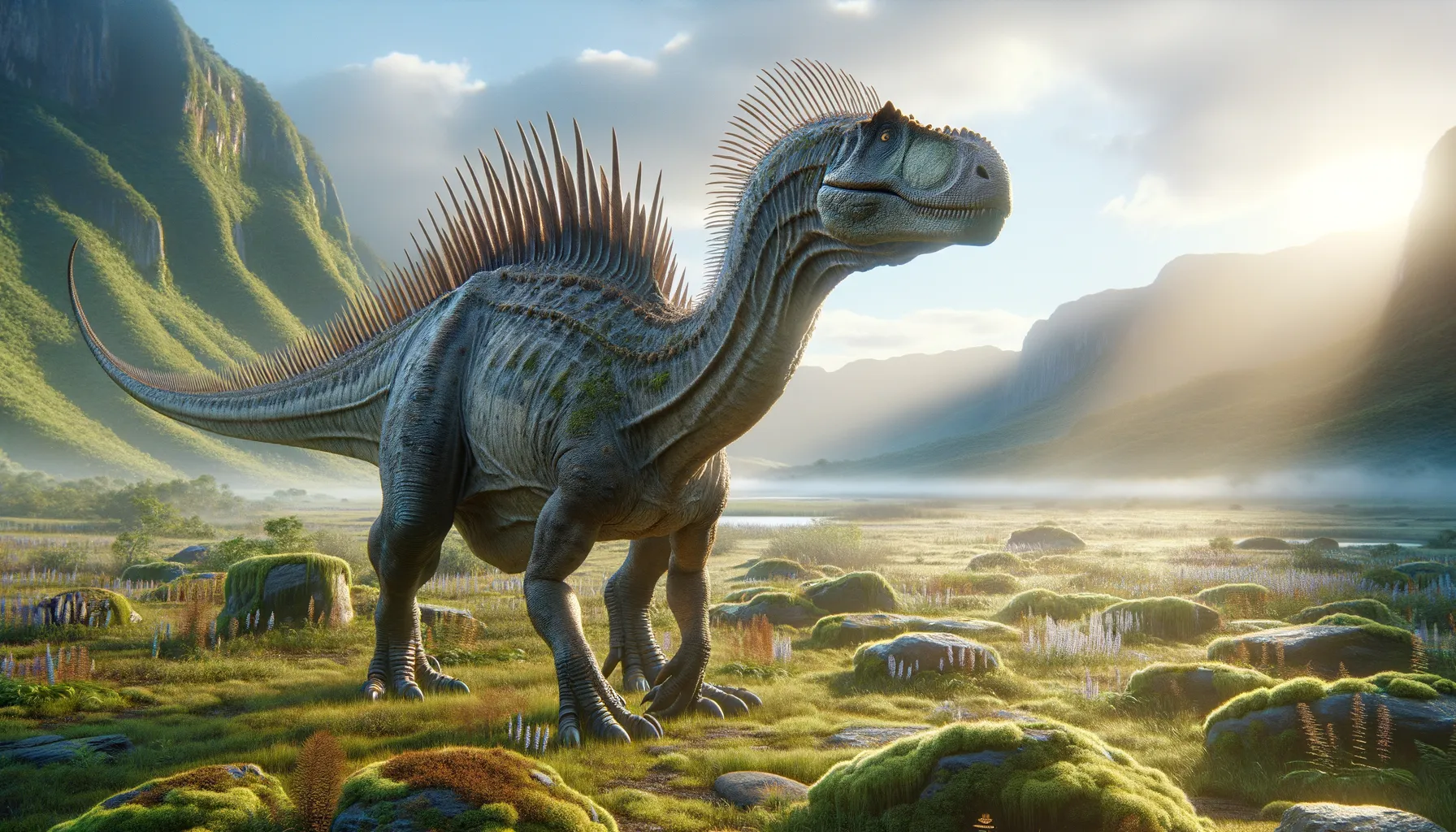
Morelladon
Spiny survivor of the ancient Iberian landscape.
Period
Cretaceous
Length
About 6 meters long.
Height
Approximately 2 meters at the shoulder.
Weight
Roughly 1,000 kilograms.
Morelladon, an ornithopod dinosaur, roamed the Iberian Peninsula during the Early Cretaceous period. Characterized by distinctive spines along its back, it likely grazed in lush environments. The spines might have played a role in thermoregulation or display. This herbivorous dinosaur adds to our understanding of the diverse ecosystems that existed in Europe over 125 million years ago, highlighting its adaptability and the variety of life it coexisted with.
Diet
Morelladon was herbivorous, feeding on a variety of plant material. Its diet likely consisted of ferns, cycads, and conifers, which were abundant in its environment.
Hunting
As a herbivore, Morelladon did not hunt for food. It foraged for plants, using its beak-like mouth to clip vegetation.
Environmental challenges
Morelladon faced environmental challenges that included climate fluctuations and potential droughts, which could impact the availability of vegetation. Predators posed another threat, requiring constant vigilance. As a result, Morelladon needed to adapt to a dynamic ecosystem, finding reliable food sources and maintaining mobility for safety.
Speed
Moderate pace, suitable for short travels.
Lifespan
Estimated lifespan of up to 20 years.
First discovery
Discovered in Spain in 2015.
Fun Facts
- Morelladon was a dinosaur that lived during the Early Cretaceous period, around 130 million years ago.
- It was discovered in what is now Spain, specifically in the Morella region, which is how it got its name.
- This dinosaur had a distinctive sail on its back, which may have been used for temperature regulation or attracting mates.
- Morelladon was a relatively small herbivore, measuring about 6 meters in length.
- Its remains were first discovered in 2013 by a team of Spanish paleontologists.
- Morelladon belongs to the Iguanodontia group, which includes well-known dinosaurs like Iguanodon.
- The discovery of Morelladon helps scientists understand the diversity of plant-eating dinosaurs in Europe during the Cretaceous period.
Growth and Development
Morelladon likely experienced rapid growth during its juvenile stages to reach a size that minimized predation risks. Development included growing the characteristic neural spines. These spines might have developed later in life, serving a purpose in temperature regulation or social interaction.
Habitat
Morelladon inhabited what is now Spain and likely favored environments with abundant vegetation. It lived near rivers and floodplains, which provided ample food resources. This dinosaur might have shared its habitat with other herbivores and predators, navigating a complex and thriving ecological community.
Interaction with other species
Morelladon likely coexisted with other herbivorous dinosaurs, competing for similar food resources. It had to be aware of carnivorous dinosaurs in its habitat, possibly forming herds as a defense strategy. Its spines might have also been used for species-specific displays or identification.
Natural lifespan
Morelladon's natural lifespan could reach up to 20 years.
Reproduction
Morelladon is believed to have reproduced by laying eggs, like most dinosaurs. Nests would have been carefully constructed in hidden or protected areas to guard against predators. Parental care might have been involved, ensuring the survival of the young until they could fend for themselves.
Social behaviour
Morelladon may have lived in groups, offering protection and enhancing the search for food. Communication among individuals might have occurred through visual signals or vocalizations. This social behavior would have been critical for raising young and avoiding predators.
Fossil locations
Fossils of Morelladon have been found in the region of Morella, Spain. These discoveries have expanded our understanding of European dinosaur diversity. The location suggests a variety of dinosaurs once lived across this ancient landscape.
